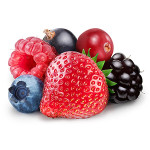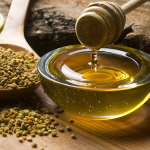 Mead, wine, and beer aficionados commonly debate the origins of the beverages and which one is technically the oldest fermented beverage. All three beverages are based on the same principles: that yeast, when given access to a sugar source, will ferment the water or juice to create an alcoholic beverage. Each drink has thousands of years of history, so why isn’t mead a household name?
Mead, wine, and beer aficionados commonly debate the origins of the beverages and which one is technically the oldest fermented beverage. All three beverages are based on the same principles: that yeast, when given access to a sugar source, will ferment the water or juice to create an alcoholic beverage. Each drink has thousands of years of history, so why isn’t mead a household name?
Why mead fell out of the public eye
It’s thought that a combination of factors resulted in the decline of mead, including the rising price of honey and falling price of sugar, French specialization in fine wines, and the acceptance of hopped beers between the thirteenth and fifteenth century. As Ken Schramm (a mead expert and author of The Compleat Meadmaker) writes, the Scots also perfected whisky-making around this time period, making mead one of the lesser-known beverages in Western countries by the time the 1700s came around. (For various reasons, including availability and traditions, other countries still drink mead or mead-like beverages more commonly than North America and western European countries have until the last decade or two.)
Mead is coming back
The resurgence of mead began in earnest in 1986, when Pamela Spence founded the American Mead Association. By 2003, 70 meaderies existed in the US alone, and at this time, over 200 meaderies are listed on the American Mead Makers Association website in the US alone, with over 40 meaderies internationally, including us at Sunset Heights Meadery.
The problem with exact definitions
With this resurgence in popularity, mead makers are hotly contesting the exact definitions of different types of mead, coming up with a vocabulary to describe their products, and establishing a new public image for this craft beverage. Similar to the revival of wine in the 1960s and 1970s, mead is catching attention from drinkers across the continent, and mead makers have to agree on what makes a show mead, whether certain categories of mead include specific fruits, or even what exactly a category of mead should be called (see capsicum, capsicumel, or capsimel mead, all names for hot pepper meads).
Not wine or beer, but something else?
So, what makes a mead a mead? The agreed-upon definition at this time is that mead is a fermented beverage made with honey, much like wine is made from grapes, cider from apples, beer from grains, sake from rice, etc. This makes mead similar to wine or beer at times, such as when you drink a pyment mead made with grapes or grape juice or a braggot made with hops, but mead is still its own type of beverage – after all, beer isn’t a grain wine, nor is wine a grape beer!
What’s the AMMA definition?
The American Mead Makers Association has some of the leading experts on mead, and they define mead this way:
“Mead is an alcoholic beverage that is produced by fermenting a solution of honey and water. To be classified as Mead no less than 51% of the fermentable sugars must come from honey. Depending on local traditions and specific recipes, it may be flavored with spices, fruit, or hops. The alcoholic content of mead may range from about 8% to 18% ABV. It may be still, carbonated, or sparkling, and it may be dry, semi-sweet, or sweet.” (source: http://www.meadmakers.org/styles.htm )
Pollen Angels: sparkling session meads
Those familiar with craft brew may already recognize these terms. Session beers are beers with low alcohol content, such as 3-5% ABV. Pollen Angels meads are based on the same principle– you can drink several flavours or glasses of mead without the intoxication you’d experience from drinking the equivalent amount of mead with a higher ABV, such as the 12% ABV you often find in traditional (also called sack) meads. The drink is also sparkling, making it a good accompaniment to a meal or dessert as well as a standalone drink.
Depending on your interest in the mead world, you can try a variety of meads from dry, hopped meads with high alcohol content to smooth, sweet meads with relatively low ABVs. Meads can contain spices, fruits, herbs, flowers, and even vegetables, and they can be fermented with different yeasts or for different time periods to create different flavours. Most importantly, all meads are made with honey as the fermentable sugar source, making them a unique type of beverage.



